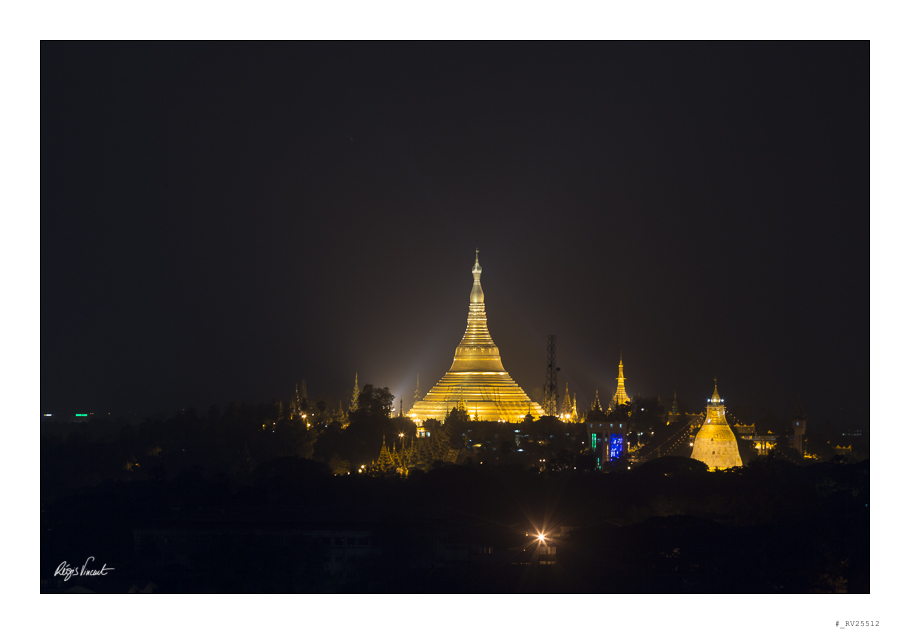In January, I traveled to Myanmar (also known as Burma) for a 12-day trip. Myanmar is a controversial country and while travel is extremely safe and pleasant, the country’s image still suffers from bad reputation. But Burma is the crown jewel of Southeast Asia. It’s the second largest country by landmass in Southeast Asia and one of the least visited. In 2013, a little over 2 millions tourists went to Myanmar, compared to 26 millions that went to Thailand. The Myanmar government is trying to encourage tourism and the number of tourists is increasing drastically. The year before, in 2012, only one million tourists went to Myanmar. Knowing this, I was very interested in visiting Myanmar sooner rather than later.
The trip was organized by Insider Asia and lead by Quang-Tuan Luong. Tuan has written a great day by day description of this trip. I’m going to structure my view not by day but by location. Our first location is Yangoon, the capital city of Myanmar. Not to miss is the Shwedagon Pagoda in the heart of Yangoon.
Shwedagon means the Reliquary of the Four, because it contains relics of the four Buddhas (Kakusanda, Kawnagamana, Kassapa and Gautama). It is the most sacred Buddhist Pagoda for the Burmese.
The Pagoda is 99 meter high covered in gold, with a 74 carat diamond on top. If this is your first stop, you will understand why Burma is nicknamed “the Gold Country”. Everything there is covered by gold. A quick advice, you will need to know the day of the week you were born. If you don’t know (or don’t remember), this handy website will tell you. I’m a Friday, if you were wondering. Armed with this information, you will need to find the marble Buddhas of your day and pour water on the left shoulder to offer your prayers. I have been told that the number of times you pour water should correspond to your age plus one.

The main explanade of the Shwedagon Pagoda

Two monks posing for me at Shwedagon Pagoda.
The best time of the day and also the most popular with visitors is at sunset. The sky is turning dark blue and the gold of the Pagoda is striking.

Even at night, there is plenty of people coming to pray.

The same espanable later that evening.
As you can see on the images, the Shwedagon Pagoda complex is quite extensive but is not very wide (except at one or two places). I had a 24mm lens and that was not wide enough. I borrowed a 16-35mm for a while but the deformation from that lens was too much for my taste. The ideal lens is the 24mm or 17mm Tilt-Shift. I highly recommend renting before going there. I wish I had known that.
Besides the large number of tourists, you will see even more monks and people praying. This is the holiest place in Burma and it’s always crowded. How do I know that, I went several times to the Shwedagon Pagoda at the beginning and the end of this trip, electing to even go by himself when the group was doing something else.
I was trying to get some pictures of the people praying, somehow I had a hard time taking their picture. It felt like stealing their private moment. In most cases, I made eye contact with them to be sure it was ok. Sometimes, I got a clear no, sometimes I got an annoyed look, sometimes I got a smile. But I have found the Burmese very welcoming and they love to have their picture taken (especially if you let them reciprocate so they can take a picture of you with them).

Praying in one of the side temple at the Shwedagon Pagoda

Here you can see people praying alone

A solitary monk in deep mediation

You can pray anywhere, at anytime.

An older monk
After sundown, the staff of the Pagoda is placing cups of oil with wicks, so the people can light them up and pray. However it did not happen every night we were there and once they even set up the candles but did not light them up.

After sundown, oil candles offering are setup.

Staff of the Shwedagon Pagoda setting up the oil candles.

People lighting up oil candles after praying
On my last day in Yangoon, I was aware that the Moon would be full and I worked out the location to have both the moon and the Shwedagon Pagoda together. Our initial location was closed (we were expecting it) but our plan was to convince the night guard to let us in anyway (we did that a lot with a lot of success during this trip). However, we got a categoric no. So we found an opening to the very edge of the gate where we could set our tripods and shoot.

The next post will be about the Sule Pagoda still in Yangoon.
All the images presented here are available for licensing or as fine art prints.


